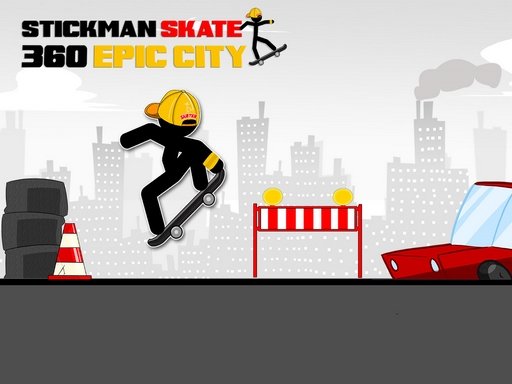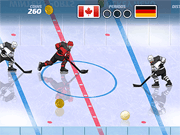
Stickman Skate 360 Epic City Game Online - Play Fun Street Sports Games
tep into the exhilarating arena as a Stickman Skater and prepare for the ultimate skateboarding challenge! Cruise through the city, showcasing your skills by executing jaw-dropping tricks and epic jumps to conquer each level. But it's not just about style - master your speed to navigate through intense obstacles and outmaneuver your foes. Face off against relentless warriors who will stop at nothing to take you down, and be ready to confront the formidable big boss who won't hesitate to unleash chaos! Will you rise to the challenge and skate your way to victory? Gear up, stay sharp, and let the fun begin!
11,638 play times
How to Play Stickman Skate 360 Epic City Game
Use the right arrow button to move forward, use the up arrow button to jump. Ride, slide and avoid the obstacles.
How is it to Skate in an Epic City such as Tokyo
Skateboarding in Japan is at once the same as anywhere else, and totally different. Everything with Japan is like that. In Tokyo you will find some of the most polite skaters in the world. Most Japanese people are far more polite than people anywhere else in the world. The popularity of skateboarding is growing fast in Japan, but it still has a ways to go. In America, a survey of teens ranked skateboarding as the 3rd most popular sport, in Japan it's not even on the list. Kids do think skateboarding is cool, but there's just not many places to skate. Concrete skate parks can only be found inside large warehouses, and only in the huge cities. Anything outdoors is made of plywood. Cops are also cracking down on skateboarders in Japan, and "no skateboarding" signs are popping up all over, which makes it hard. Skateboarding has grown in interest in Japan, and there are full-blown Japanese skateboard companies, magazines, and everything. If you are planning on visiting Japan, you should check out the Japanese skate scene.
Street Boarding is an Art and a Lifestyle
According to WikiPedia street boarding is a style of skateboarding that focuses on tricks and transitions in public places. Street skateboarders skate in urban streets, plazas or industrial areas, making use of park benches and picnic tables, guard rails and handrails, planter boxes, bins, stairs, retaining walls and other street furniture not purpose-built for skateboarding. Competition street skateboarding is conducted in purpose-built skateparks designed to replicate real-world urban environments featuring purpose built benches, stairs and rails alongside traditional skatepark elements like vert ramps and funboxes. As skateboarding gained popularity during the 1980s and 1990s, skateboarders no longer limited their activities to drained swimming pools and purpose-built skateparks. Instead, they began performing tricks in urban areas and skating through urban areas as skateboards increasingly became an accepted mode of transportation as others followed. Traversal through urban areas evolved to where some skateboarders began focusing on skating in and around those urban areas; honing their skills by skating improvised courses made up of existing urban features. Given street skateboarding makes use of urban environments and public areas, it is the style of skateboarding that most often brings skaters into contact with the public, law enforcement, and other authorities. In some cases, local authorities in popular skateboarding areas have introduced a range of initiatives to ban skateboarding, confiscate skateboards, or make skateboarding difficult or impossible.







